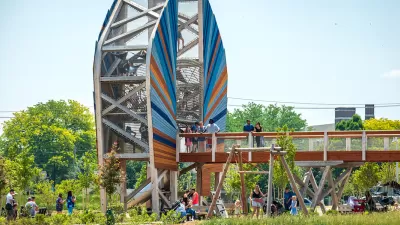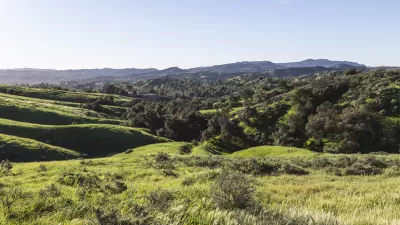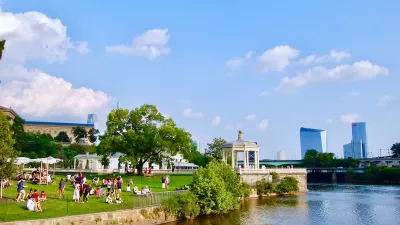Architecture critic Inga Saffron describes a new master plan for Philadelphia's signature piece of open space as "important" and "welcome," but still finds that it falls short in addressing some of the park's critical needs.

Fairmount Park has never managed to become the same kind of go-to, citywide leisure destination that Central Park is for New York City, according to architecture critic Inga Saffron. "While the Schuylkill's banks are often jammed with people, the crowds quickly thin as you push into the hinterlands, the big swaths of greenery known to park officials (but few others) as East and West Fairmount Park."
"Unlike Central Park, the bifurcated park bordering the Schuylkill between the Art Museum and the Falls Bridge is not all that convenient to most Philadelphians. The city's densest rowhouse neighborhoods lie far to the east, near the Delaware, and in South Philadelphia. Public transit access is poor. Even people living next to the park find the fragmented archipelago of niche spaces tricky to navigate."
With those limitations in mind, the Department of Parks and Recreation released a master plan for Fairmount Park. Saffron calls the report important, "as a demonstration of the Nutter administration's commitment to democratizing the city park system by improving access." Saffron also notes that the master plan "is the third major strategic plan produced in the last six years, thanks to funding from the William Penn Foundation."
But Saffron's coverage of the new plan also produces negative reviews of some of the plan's details, which she finds inadequate in addressing issues like funding (for instance, Saffron says it's "a shame the report did not have the courage to explore the possibility of a regional park tax").
FULL STORY: Changing Skyline: Fairmount Park plan is welcome, but it falls short

Alabama: Trump Terminates Settlements for Black Communities Harmed By Raw Sewage
Trump deemed the landmark civil rights agreement “illegal DEI and environmental justice policy.”

Planetizen Federal Action Tracker
A weekly monitor of how Trump’s orders and actions are impacting planners and planning in America.

The 120 Year Old Tiny Home Villages That Sheltered San Francisco’s Earthquake Refugees
More than a century ago, San Francisco mobilized to house thousands of residents displaced by the 1906 earthquake. Could their strategy offer a model for the present?

In Both Crashes and Crime, Public Transportation is Far Safer than Driving
Contrary to popular assumptions, public transportation has far lower crash and crime rates than automobile travel. For safer communities, improve and encourage transit travel.

Report: Zoning Reforms Should Complement Nashville’s Ambitious Transit Plan
Without reform, restrictive zoning codes will limit the impact of the city’s planned transit expansion and could exclude some of the residents who depend on transit the most.

Judge Orders Release of Frozen IRA, IIJA Funding
The decision is a victory for environmental groups who charged that freezing funds for critical infrastructure and disaster response programs caused “real and irreparable harm” to communities.
Urban Design for Planners 1: Software Tools
This six-course series explores essential urban design concepts using open source software and equips planners with the tools they need to participate fully in the urban design process.
Planning for Universal Design
Learn the tools for implementing Universal Design in planning regulations.
Clanton & Associates, Inc.
Jessamine County Fiscal Court
Institute for Housing and Urban Development Studies (IHS)
City of Grandview
Harvard GSD Executive Education
Toledo-Lucas County Plan Commissions
Salt Lake City
NYU Wagner Graduate School of Public Service





























